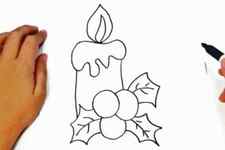Spotlight on Young Children and the Creative Arts, edited by Derry Koralek. This NAEYC publication focuses on both understanding and doing creative arts with young children.
A 7-step guide to arts and crafts at home with kids at home

So you want to do arts and crafts with your kids at home but don’t know where to start? Don’t worry, I’ve created a crafty guide to get you going and help you every step of the way!
The key is just a bit of planning and being organized. And remember, it’s all about the fun process, not the end result!
Before you begin, you will need basic art supplies (see, it all begins with a bit of planning!). Check out our guide to art and craft supplies for a list of the basic art supplies and where to buy them in Hong Kong.
Now you’ve got all your art supplies, how do you get started?
1. Plan a date and time to do an art activity with your kids
- Plan a time to do an activity as often as you can, but only when it suits your schedule and doesn’t get you overwhelmed. Art and crafts can’t be rushed! If you have a busy week ahead, then do something quick or simple like painting, drawing, colouring or decorating something small instead of a more involved project.
- Put it in your calendar along with a start/end time and set a reminder for the day before. Make sure you allow enough time for the activity (always give yourself an extra 5 minutes just in case).
- Plan the time for when your child will enjoy concentrating on the task at hand. Consider a time after their snack/lunch time or do it after a physical activity like a trip to the park.
2. Decide what type of activity you want to do
- The activity needs to be relatable to your child. Choose a topic that they are learning about at school, their favourite book or toy, something you did together recently or related to a place you visited. How about that trip to Ocean Park or a day at the beach!
- Do you want to create something 2D or 3D? Will you build something or make a decoration?
- Choose something that is suitable for your child’s skill level so that they enjoy doing it and don’t get frustrated because it’s too difficult.
3. Make sure you have everything you need ready
- Draw up a detailed list of everything you need to do the activity, right down to the smallest detail. Even include things like a cloth for cleaning or bowl of water for cleaning paint brushes. Keep a record of your lists for future use and update it over time.
- Choose a suitable space in your house to do the activity where they won’t get easily distracted by noise, toys or other people. You can call this the “art station”, “art room” or call it a fun name your child likes!
- It’s easier for young kids to be standing when painting. For a change older kids may like to sit on the floor if they are cutting and pasting to make a collage.
4. 10 minutes before you begin
- Set up the area (art station) where you will do your activity. Lay down newspaper or a plastic cloth over your table.
- Lay out all the supplies you need.
- For younger kids, you should set up everything for them. Older kids can help with this if they are capable.
5. Introducing the activity
- Talk to your child about doing the art and craft activity you are going to do. (To build excitement and some anticipation you can even start talking about it a couple of days before for older kids and earlier the same day for younger kids.)
- For younger kids, you can show them a picture of what they will be making while explaining it to them. To introduce a particular theme to them you could read a book on the topic with them. For older kids, you could just first talk about what you’ll be making and share ideas and thoughts about it.
- Take them over to the art station and begin!
6. During the activity
- For young kids, name and explain the supplies and materials that you are going to use. Encourage them to explore them before starting the activity.
- Younger kids will need help and guidance when doing the activity while older kids can have the opportunity to do things on their own along with your help where needed.
- Talk positively with your child and give them praise where due and encouragement when necessary.
7. At the end
- Praise your child for a job well done! Tell them what you like most about it.
- Ask them what they liked doing best and what do they like the most about their finished artwork.
When you’re finished, reflect and pat yourself on the back! You did it! Make a note of what worked well and what didn’t or how you could improve for next time.
So are you ready to get started doing arts and crafts at home with your kids?
I hope this 7-step guide to arts and crafts at home with kids encourages you to get started and will be useful guide to help ensure your success.
You really just need the basics, kids are creative and you could even just see what they come up with when using the supplies you give them.
If you are looking for fun arts and craft ideas, check out the DIY activities on our blog. Or if you are interested in a convenient way for your kids to learn creative thinking at home with your kids in Hong Kong, why not subscribe to ActivityBox!
Sign-up for a flexible Monthly Subscription or get the full benefits from our 3-Month Program and 6-Month Program.
Each month you’ll receive a Box with 4 art and craft activities to do together with your kids at home. Step by step instructions and all the materials you need are included, so it’s easy to get started this weekend.
Questions? Check out our FAQs page for more info.
Characteristics of process-focused art experiences
- There are no step-by-step instructions
- There is no sample for children to follow
- There is no right or wrong way to explore and create
- The art is focused on the experience and on exploration of techniques, tools, and materials
- The art is unique and original
- The experience is relaxing or calming
- The art is entirely the children’s own
- The art experience is a child’s choice
- Ideas are not readily available online
What children might say
“Look what I made!” “I’m going to do another!”
“Can I have more time?”
Characteristics of product-focused art experiences
- Children have instructions to follow
- The teacher created a sample for children to copy
- There’s a right and a wrong way to proceed
- There’s a finished product in mind
- The children’s finished art all looks the same
- The children experience frustration
- The teacher might “fix mistakes”
- The whole class took part in an art project at the same time
- Patterns and examples are readily available online
What children might say
“Can I be done now?”
“Mine doesn’t look like yours.”
Provide open-ended, creative art experiences by offering activities such as
- Easel painting with a variety of paints and paintbrushes (with no directions)
- Watercolor painting
- Exploring and creating with clay
- Finger painting
- Painting with unusual tools like toothbrushes, paint rollers, potato mashers
- Printing and stamping (stamps purchased or made with sponges)
- Creating spin art using a record player and paint, squirt bottles, paintbrushes, or markers
- Stringing beads independently and creatively
- Weaving cloth, yarn, or paper
- Drawing with pencils, art pens, various sizes of markers, or crayons
- Using homemade doughs
- Making collages using tissue paper, various sizes of paper, glue, paste, glue sticks, scissors, and recycled materials
- Approach art like open-ended play—for example, provide a variety of materials and see what happens as the child leads the art experience
- Make art a joyful experience. Let children use more paint, more colors, and make more and more artwork
- Provide plenty of time for children to carry out their plans and explorations
- Let children come and go from their art at will
- Notice and comment on what you see: Look at all the yellow dots you painted
- Say YES to children’s ideas
- Offer new and interesting materials
- Play music in the background
- Take art materials outside in the natural light
- Display children’s books with artful illustrations, such as those by Eric Carle, Lois Ehlert, and Javaka Steptoe
- Let the children choose whether their art goes home or stays in the classroom
- Remember that it’s the children’s art, not yours




